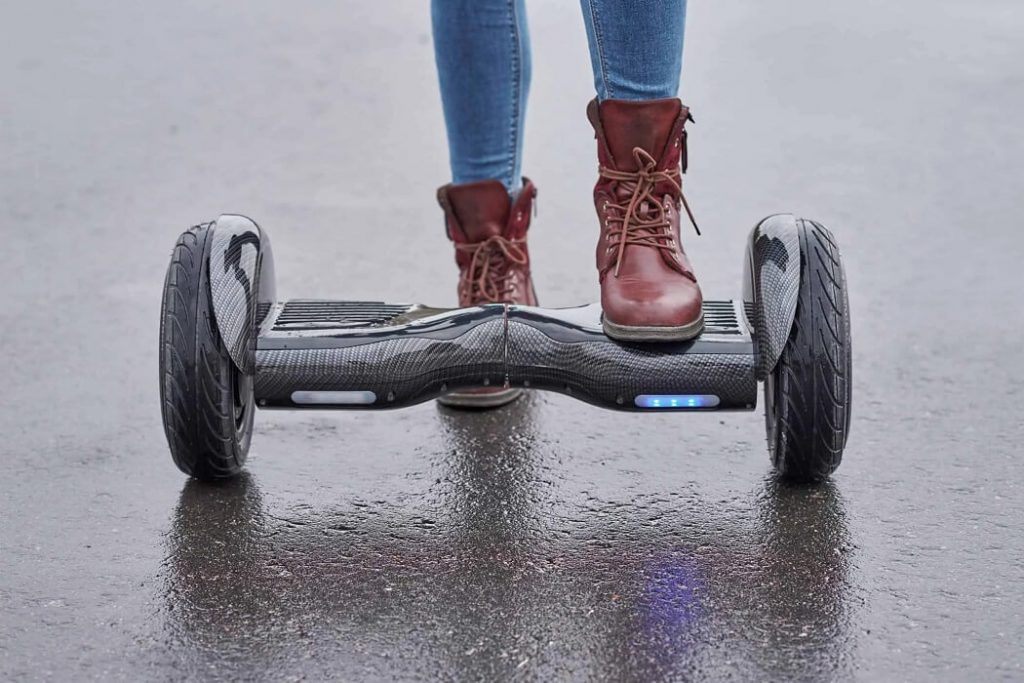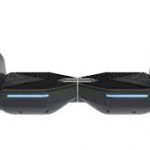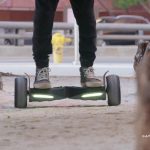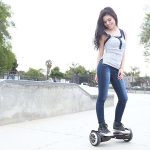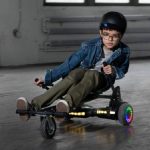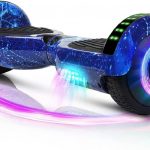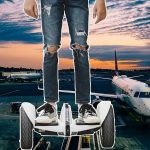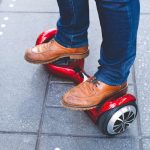In the realm of modern transportation, hoverboards have taken the world by storm. These sleek, self-balancing devices have revolutionized short-distance travel, offering a fun and eco-friendly way to get from point A to point B. But as any seasoned hoverboard enthusiast knows, one of the most critical factors in determining the worth of a hoverboard is its range on a single charge. Having spent countless hours testing various hoverboards, I’m here to delve into the intricacies of this essential feature, shedding light on the parameters that determine how far a hoverboard can travel on a full charge.
The Battery: The Heart of the Matter
At the core of a hoverboard’s range capability lies its battery. The battery is the lifeblood of the device, and its capacity plays a pivotal role in determining how far you can go before needing a recharge. Lithium-ion batteries are the standard for most hoverboards, known for their high energy density and relatively low weight. When shopping for a hoverboard, the battery’s capacity, typically measured in watt-hours (Wh), is a crucial specification to consider. A higher watt-hour rating equates to a longer range, as it means the battery can store more energy. A good rule of thumb is that a hoverboard with a battery capacity of 160Wh or higher can provide a range of 10 miles or more on a single charge. However, it’s important to note that the actual range can vary based on several other factors.
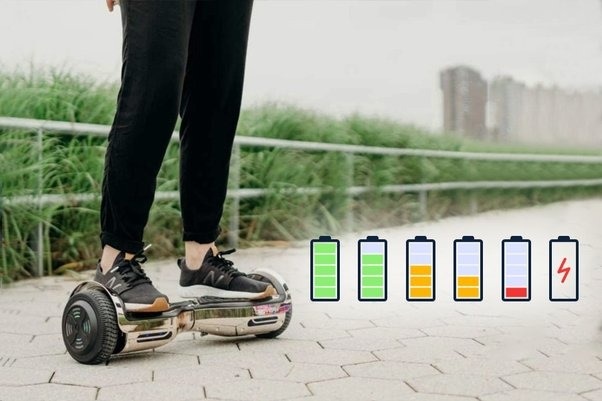
Battery Types in The Hoverboards
Hoverboards have come a long way since their inception, and one of the most critical aspects of their evolution has been the development of various battery types. These batteries not only determine the hoverboard’s performance but also impact safety and overall user experience. Let’s explore the different battery types commonly used in hoverboards:
- Lithium-Ion (Li-ion) Batteries:
- The Standard Choice: Lithium-ion batteries are the most common type found in hoverboards. They are preferred for their high energy density, relatively low weight, and excellent overall performance.
- Safety Features: Li-ion batteries often include safety features such as thermal protection and overcharge protection to reduce the risk of fire or explosions.
- Longevity: With proper care and maintenance, Li-ion batteries can provide hundreds of charge cycles, ensuring a reasonable lifespan for your hoverboard.
- Lithium-Polymer (LiPo) Batteries:
- High Discharge Rates: LiPo batteries are known for their high discharge rates, making them suitable for hoverboards that require bursts of power for acceleration and climbing.
- Customizable Shapes: Unlike rigid Li-ion batteries, LiPo batteries can be manufactured in various shapes, allowing for more flexible design options in hoverboards.
- Sensitive to Overcharging: LiPo batteries can be sensitive to overcharging, and mishandling can lead to safety hazards, so they require careful charging and storage.
- Nickel Metal Hydride (NiMH) Batteries:
- Eco-Friendly Option: NiMH batteries are considered more environmentally friendly than Li-ion or LiPo batteries because they contain fewer toxic materials.
- Lower Energy Density: They have a lower energy density compared to Li-ion batteries, which means hoverboards equipped with NiMH batteries typically have shorter ranges and less power.
- Lead-Acid Batteries:
- Rarely Used: Lead-acid batteries are not commonly used in modern hoverboards due to their heavy weight, low energy density, and relatively short lifespan compared to lithium-based batteries.
- Affordability: They are more affordable than lithium-based batteries but are often avoided due to their poor performance characteristics.
- Solid-State Batteries (Emerging Technology):
- The Future of Hoverboards: Solid-state batteries are an emerging technology that holds great promise for future hoverboard designs. They offer higher energy density, improved safety, and faster charging times compared to traditional lithium-ion batteries.
- Longevity and Safety: Solid-state batteries are expected to have a longer lifespan and be less prone to overheating or fires, making them a safer and more durable choice.
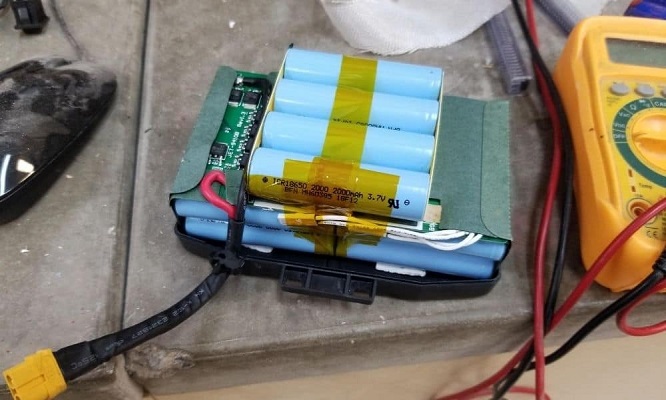
The choice of battery type for a hoverboard depends on various factors, including performance requirements, cost considerations, and safety concerns. For most consumers, lithium-ion and lithium-polymer batteries remain the preferred choices due to their optimal balance of energy density, weight, and safety features. However, as battery technology continues to advance, we can expect even more efficient and powerful options to emerge, further enhancing the future of hoverboarding.
| Battery Type | Energy Density | Weight | Lifespan | Safety Features | Discharge Rate | Environmental Impact |
|---|---|---|---|---|---|---|
| Lithium-ion (Li-ion) | High | Moderate | Long | Thermal, Overcharge | Moderate to High | Moderate |
| Lithium-Polymer (LiPo) | High | Lightweight | Long | Thermal, Overcharge | High | Moderate |
| Nickel Metal Hydride (NiMH) | Moderate | Moderate | Moderate | – | Moderate | More Eco-Friendly |
| Lead-Acid | Low | Heavy | Short | – | Low | Less Eco-Friendly |
| Solid-State (Emerging) | High | Moderate | Expected Long | Enhanced Safety | High | Promising, Environmentally Friendly |
Please note that the actual performance of batteries can vary depending on the specific manufacturer and quality of the battery cells used in hoverboards. Additionally, the environmental impact can also depend on how the batteries are disposed of and recycled. Always follow proper disposal and recycling guidelines for batteries to minimize environmental harm.
Motor Power and Efficiency
The motor’s power and efficiency are also key factors in determining how far a hoverboard can go on a single charge. Most hoverboards come equipped with dual motors, one for each wheel, which are rated in terms of wattage. A more powerful motor can provide better performance, including improved acceleration and hill-climbing abilities, but it can also be a drain on the battery. Efficient motors can help extend the range by converting a higher percentage of the battery’s energy into forward motion, rather than generating excess heat or noise. When evaluating a hoverboard’s motor specifications, look for a balance between power and efficiency to maximize range.
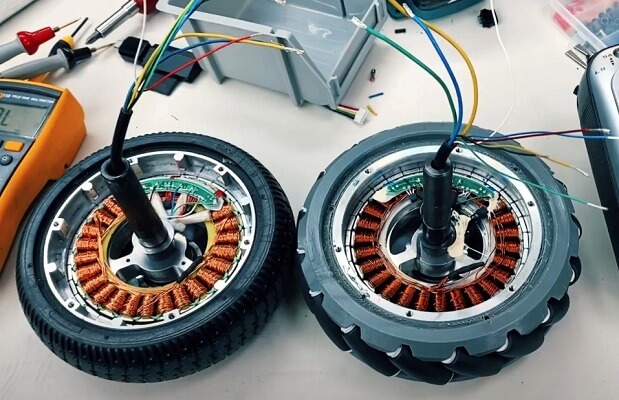
Motor Types in The Hoverboards
Hoverboards rely on electric motors to propel them forward and provide the self-balancing functionality that makes them so popular. The type of motor used can greatly influence a hoverboard’s performance, efficiency, and overall riding experience. Here’s an overview of the motor types commonly found in hoverboards:
- Brushless DC Motors (BLDC):
- Efficiency and Durability: Brushless DC motors are the most common type of motors in modern hoverboards. They are known for their efficiency, durability, and minimal maintenance requirements.
- Smooth Operation: BLDC motors provide smooth and precise control, allowing for seamless acceleration and braking, which is crucial for maintaining balance.
- Long Lifespan: These motors have a longer lifespan compared to brushed motors because they have fewer moving parts and are less prone to wear and tear.
- Reduced Noise: BLDC motors are relatively quiet, ensuring a quieter and more pleasant riding experience.
- Brushed Motors:
- Less Common: Brushed motors are less commonly used in modern hoverboards due to their inherent drawbacks compared to brushless motors.
- Simplicity: They are simpler in design but have brushes and a commutator that can wear out over time, requiring maintenance.
- Lower Efficiency: Brushed motors are generally less efficient than brushless motors, which can result in reduced battery life and less range.
- More Noise and Heat: These motors tend to produce more noise and heat during operation, which can be less comfortable for riders.
- Hub Motors:
- Space-Efficient: Hub motors are located within the wheels of the hoverboard, making them a space-efficient choice that doesn’t require additional external components.
- Simplified Maintenance: Hub motors are easy to maintain because they have fewer moving parts exposed to dirt and debris.
- Balanced Weight Distribution: Hub motors can provide a more balanced weight distribution, which can enhance stability and control.
- Variability in Performance: The performance of hub motors can vary depending on their size and power, and they are often used in dual-motor setups for improved performance.
- Belt-Drive Motors (Less Common):
- Greater Flexibility: Belt-drive motors use a belt and pulley system to drive the wheels, offering more flexibility in terms of motor placement and wheel size.
- Quiet Operation: They tend to operate more quietly compared to some other motor types.
- Maintenance Considerations: Belt-drive systems may require occasional belt replacement or adjustment, which can be a maintenance factor to consider.
- In-Wheel Motors (Emerging Technology):
- Cutting-Edge Innovation: In-wheel motors are an emerging technology that integrates the motor directly into the wheel hub, offering unique design possibilities.
- Enhanced Efficiency: They can provide improved energy efficiency and power delivery due to their direct connection to the wheel.
- Smoother Ride: In-wheel motors can offer a smoother and more responsive ride, as they reduce friction and mechanical losses.
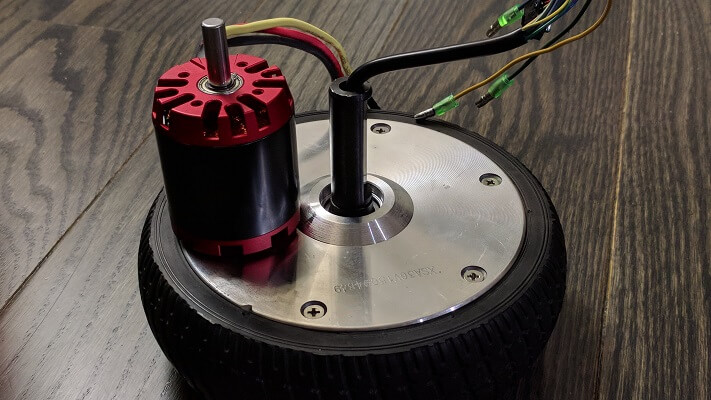
The choice of motor type in a hoverboard depends on various factors, including desired performance characteristics, maintenance preferences, and design considerations. For most modern hoverboards, brushless DC motors, particularly hub motors, are the go-to choice due to their efficiency, reliability, and overall riding experience. As technology continues to advance, we can expect even more innovations in hoverboard motor technology, further improving the performance and capabilities of these futuristic personal transportation devices.
| Motor Type | Efficiency & Durability | Maintenance | Noise Level | Weight Distribution | Notable Features |
|---|---|---|---|---|---|
| Brushless DC Motors (BLDC) | High | Low | Low | Balanced | Smooth operation, long lifespan |
| Brushed Motors | Lower | Moderate | Moderate to High | Varies | Simplicity, less common |
| Hub Motors | High | Low | Low | Balanced | Space-efficient, simplified maintenance |
| Belt-Drive Motors (Less Common) | Moderate | Moderate | Low | Varies | Greater flexibility |
| In-Wheel Motors (Emerging) | High | Low | Low | Balanced | Cutting-edge innovation, enhanced efficiency |
Please note that the performance and characteristics of each motor type can vary depending on factors such as the quality of components used, design choices, and manufacturer specifications. When choosing a hoverboard, it’s important to consider how these motor types align with your specific preferences and requirements for riding experience and maintenance.
Rider’s Weight & Terrain
One often overlooked factor in a hoverboard’s range is the rider’s weight and the terrain on which it’s ridden. Heavier riders will put more strain on the battery, reducing the overall range. Similarly, rough or hilly terrain can demand more power from the motor and battery, causing a decrease in range. If you’re a heavier rider or plan to navigate challenging landscapes, it’s essential to consider these factors when estimating how far your hoverboard will travel on a single charge.
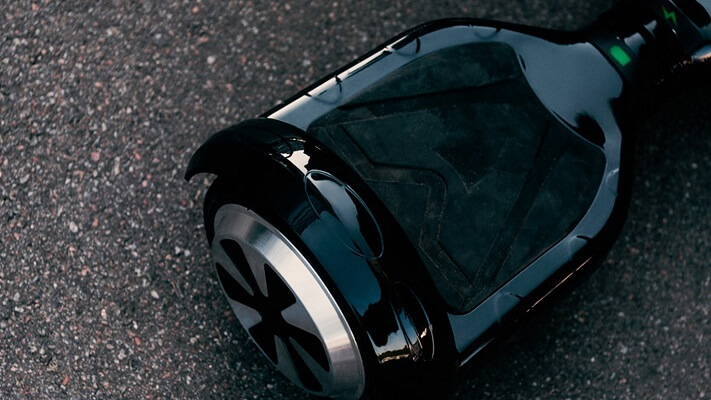
Certainly, the rider’s weight and the type of terrain play significant roles in determining the performance and range of a hoverboard. Let’s explore these factors in more detail:
Rider’s Weight
- Impact on Battery Life: Heavier riders put more strain on the hoverboard’s motor and battery. The extra weight requires the motor to work harder to maintain balance and propel the rider forward. As a result, the battery drains faster, leading to reduced range on a single charge.
- Acceleration and Speed: Heavier riders may experience slightly slower acceleration and top speeds compared to lighter riders on the same hoverboard. The increased load can affect the hoverboard’s ability to reach its maximum speed quickly.
- Balance and Stability: Hoverboards are designed to self-balance, but the degree of ease in maintaining balance may vary depending on the rider’s weight. Lighter riders may find it easier to control their hoverboards, while heavier riders may need to make slight adjustments to maintain stability.
- Weight Limitations: Most hoverboards have weight limits specified by the manufacturer. Exceeding these limits can not only affect performance but also compromise rider safety. It’s essential to adhere to these weight recommendations to ensure safe operation.
Terrain
- Smooth Pavement: Hoverboards perform best on smooth, flat surfaces like sidewalks, bike paths, and indoor floors. Smooth terrain minimizes resistance, allowing for better efficiency and longer range on a single charge.
- Uneven Terrain: Hoverboards can handle slightly uneven surfaces, such as moderately textured pavement or minor bumps, with relative ease. However, riding on rough terrain or gravel can be challenging and significantly reduce both range and stability.
- Hills and Inclines: Climbing hills or inclines can be a power-intensive task for hoverboards. The steeper the incline, the more energy the motor and battery require to maintain forward motion. As a result, range is typically reduced when navigating hilly terrain.
- Off-Road Terrain: Some specialized off-road hoverboards are designed with larger wheels and robust motors to handle off-road adventures. These models can perform reasonably well on grass, dirt trails, and other non-paved surfaces. However, they often have shorter ranges due to the increased power demands of rough terrain.
- Temperature: Extreme cold can affect battery performance, reducing range. It’s not uncommon for hoverboards to experience a decrease in range in cold weather conditions. Conversely, extremely hot temperatures can also impact battery life.
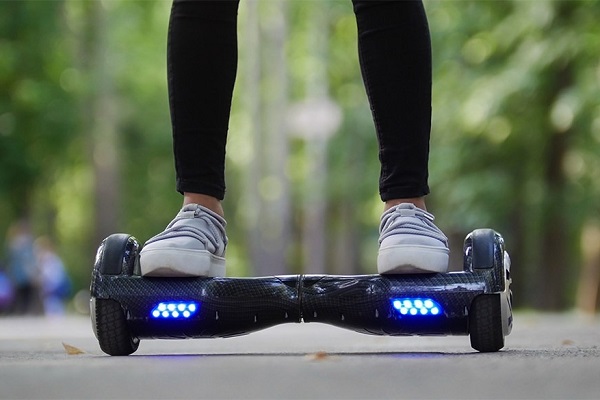
In summary, a rider’s weight and the type of terrain they intend to navigate are critical factors to consider when estimating a hoverboard’s range on a single charge. Heavier riders and challenging terrain can both lead to decreased range, while lighter riders on smooth surfaces are more likely to achieve the maximum advertised range. When selecting a hoverboard, it’s important to take these factors into account to ensure that the device meets your specific needs and expectations for both performance and range.
Conclusion
Having extensively tested a range of hoverboards in various conditions, I can attest that the advertised range is often a best-case scenario. Real-world factors like rider weight, terrain, and even temperature can significantly affect the actual range you’ll experience. Therefore, it’s crucial to take these variables into account when choosing a hoverboard that meets your specific needs. In my experience, hoverboards with higher-capacity batteries, efficient motors, and a rider-conscious mindset can achieve impressive distances on a single charge. So, whether you’re using your hoverboard for a daily commute or simply for recreational joyrides, understanding the parameters that influence range will help you get the most out of your futuristic ride.
Video Review
FAQ
Q: How far can a typical hoverboard travel on a single charge?
A: The range of a hoverboard on a single charge varies depending on factors like the battery capacity, rider’s weight, terrain, and speed. On average, most hoverboards can travel between 7 to 15 miles (11 to 24 kilometers) on a full charge.
Q: What's the role of battery capacity in determining range?
A: Battery capacity, usually measured in watt-hours (Wh), plays a crucial role in determining the hoverboard’s range. A higher watt-hour rating generally means a longer range because the battery can store more energy.
Q: How does the rider's weight affect a hoverboard's range?
A: Heavier riders consume more power as the hoverboard needs to work harder to maintain balance and move forward. As a result, a heavier rider will typically experience a shorter range compared to a lighter rider on the same hoverboard.
Q: Can terrain impact a hoverboard's range?
A: Yes, the type of terrain can significantly impact range. Hoverboards perform best on smooth, flat surfaces. Rough terrain, inclines, and obstacles can reduce range due to increased power demands and resistance.
Q: Do all hoverboards have the same range?
A: No, hoverboards can vary widely in terms of range. Different models come with different battery capacities, motor types, and designs, leading to varying ranges. It’s essential to check the specifications for each model.
Q: Are there any tips for maximizing hoverboard range?
A: Yes, you can maximize your hoverboard’s range by maintaining it properly, riding on smooth surfaces, avoiding steep hills, and ensuring the tires are properly inflated. Also, consider reducing your speed to conserve energy.
Q: How long does it typically take to recharge a hoverboard battery fully?
A: Charging times vary depending on the hoverboard and charger. It usually takes around 2 to 4 hours to fully charge a hoverboard battery, although some models may take longer.
Q: Can you upgrade a hoverboard's battery to increase its range?
A: In some cases, it may be possible to upgrade a hoverboard’s battery to increase its range, but it’s essential to consult the manufacturer or a professional technician to ensure compatibility and safety.
Q: Are there any safety precautions to consider when riding a hoverboard for an extended range?
A: Yes, always wear appropriate safety gear like helmets and pads. Be aware of your surroundings, and take breaks to avoid fatigue. Also, ensure that your hoverboard is in good working condition to prevent unexpected issues during your ride.
Q: What is the significance of motor type in determining hoverboard range?
A: Motor type can impact range because more efficient motors convert a higher percentage of the battery’s energy into forward motion, maximizing range. Brushless DC motors, especially hub motors, are commonly used for their efficiency and range optimization.
